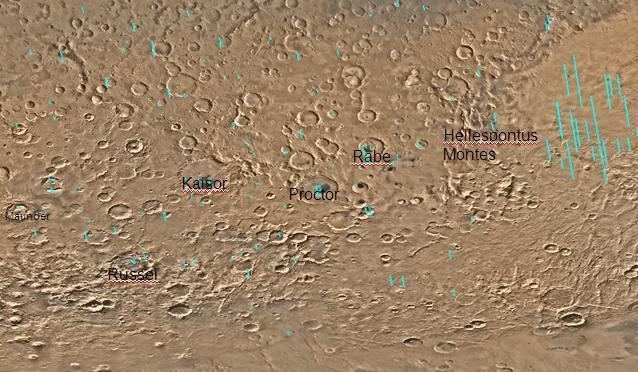 | ||
Rabe Crater is a crater in the Noachis quadrangle of Mars located at 43.9° south latitude 325.1° west longitude. It is about 108 km in diameter and was named after Wilhelm F. Rabe, a German astronomer (1893–1958).
Why are Craters important?
The density of impact craters is used to determine the surface ages of Mars and other solar system bodies. The older the surface, the more craters present. Crater shapes can reveal the presence of ground ice.
The area around craters may be rich in minerals. On Mars, heat from the impact melts ice in the ground. Water from the melting ice dissolves minerals, and then deposits them in cracks or faults that were produced with the impact. This process, called hydrothermal alteration, is a major way in which ore deposits are produced. The area around Martian craters may be rich in useful ores for the future colonization of Mars. Studies on the earth have documented that cracks are produced and that secondary minerals veins are deposited in the cracks. Images from satellites orbiting Mars have detected cracks near impact craters. Great amounts of heat are produced during impacts. The area around a large impact may take hundreds of thousands of years to cool. Many craters once contained lakes. Because some crater floors show deltas, we know that water had to be present for some time. Dozens of deltas have been spotted on Mars. Deltas form when sediment is washed in from a stream entering a quiet body of water. It takes a bit of time to form a delta, so the presence of a delta is exciting; it means water was there for a time, maybe for many years. Primitive organisms may have developed in such lakes; hence, some craters may be prime targets for the search for evidence of life on the Red Planet.
